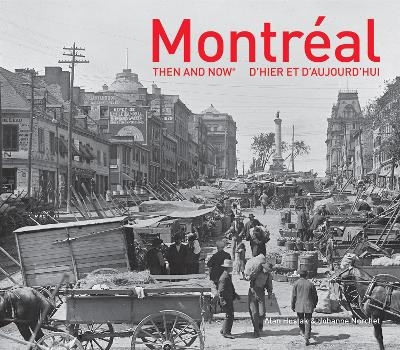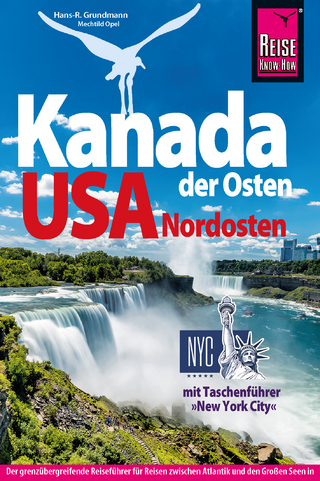
Montreal Then and Now®
Seiten
2017
Pavilion (Verlag)
978-1-911216-50-6 (ISBN)
Pavilion (Verlag)
978-1-911216-50-6 (ISBN)
- Titel ist leider vergriffen;
keine Neuauflage - Artikel merken
Montreal Then and Now takes 70 archive photos from across the city on the banks of the St.Lawrence river and compares them with the same view today in this fascinating bilingual edition.
Established in 1642 as a Roman Catholic mission, Montreal was named for the mountain where its French founders erected a cross. They also laid out the streets that today meander through three core districts: the Plateau, Downtown, and historic Old Montreal. The city has remade itself three times: first in the 1830s when planners decreed that all buildings be built with Trenton limestone; again in the 1870s when the city moved up the hill into what is called the Square Mile; and finally in the 1960s, when Place Ville Marie and the infrastructure for the Expo 67 World’s Fair dramatically altered the skyline. A number of historic properties were lost, including the St. James Club, Her Majesty’s Theatre, and the Van Horne Mansion. In spite of the architectural vandalism, Montreal, with its signature greystone buildings and quiet parks, remains Canada’s most alluring and invigorating city.
Sites include: Mount Royal, City Hall, Champ de Mars, Place Jacques Cartier, Sailors Chapel, Bonsecours Market, Place Royale, Place D”Armes, Notre Dame, Chinatown,Victoria Square, Fairmont Le Reine Elizabeth, Windsor Station, Sun Life Building, Windsor Hotel, Dorchester Square, Cathedral of Mary Queen of the World, St.Lawrence Boulevard, St. Jean, Habitat 67, Expo 67, Cartier Monument, Olympic Stadium.
Established in 1642 as a Roman Catholic mission, Montreal was named for the mountain where its French founders erected a cross. They also laid out the streets that today meander through three core districts: the Plateau, Downtown, and historic Old Montreal. The city has remade itself three times: first in the 1830s when planners decreed that all buildings be built with Trenton limestone; again in the 1870s when the city moved up the hill into what is called the Square Mile; and finally in the 1960s, when Place Ville Marie and the infrastructure for the Expo 67 World’s Fair dramatically altered the skyline. A number of historic properties were lost, including the St. James Club, Her Majesty’s Theatre, and the Van Horne Mansion. In spite of the architectural vandalism, Montreal, with its signature greystone buildings and quiet parks, remains Canada’s most alluring and invigorating city.
Sites include: Mount Royal, City Hall, Champ de Mars, Place Jacques Cartier, Sailors Chapel, Bonsecours Market, Place Royale, Place D”Armes, Notre Dame, Chinatown,Victoria Square, Fairmont Le Reine Elizabeth, Windsor Station, Sun Life Building, Windsor Hotel, Dorchester Square, Cathedral of Mary Queen of the World, St.Lawrence Boulevard, St. Jean, Habitat 67, Expo 67, Cartier Monument, Olympic Stadium.
Born in Saskatchewan Alan Hustak moved to Montreal in 1967 where he worked as a national television reporter for CTV and as a CBC radio reporter. He has been with The Gazette in Montreal for eighteen years. He is the author of several books including St Patrick's of Montreal.
| Erscheinungsdatum | 07.06.2017 |
|---|---|
| Reihe/Serie | Then and Now |
| Sprache | englisch |
| Maße | 285 x 250 mm |
| Gewicht | 950 g |
| Themenwelt | Kunst / Musik / Theater ► Fotokunst |
| Sachbuch/Ratgeber ► Geschichte / Politik ► Allgemeines / Lexika | |
| Sachbuch/Ratgeber ► Geschichte / Politik ► Regional- / Landesgeschichte | |
| Reisen ► Bildbände ► Nord- / Mittelamerika | |
| Reiseführer ► Nord- / Mittelamerika ► Kanada | |
| Geisteswissenschaften ► Geschichte ► Regional- / Ländergeschichte | |
| Technik ► Architektur | |
| ISBN-10 | 1-911216-50-3 / 1911216503 |
| ISBN-13 | 978-1-911216-50-6 / 9781911216506 |
| Zustand | Neuware |
| Haben Sie eine Frage zum Produkt? |
Mehr entdecken
aus dem Bereich
aus dem Bereich


